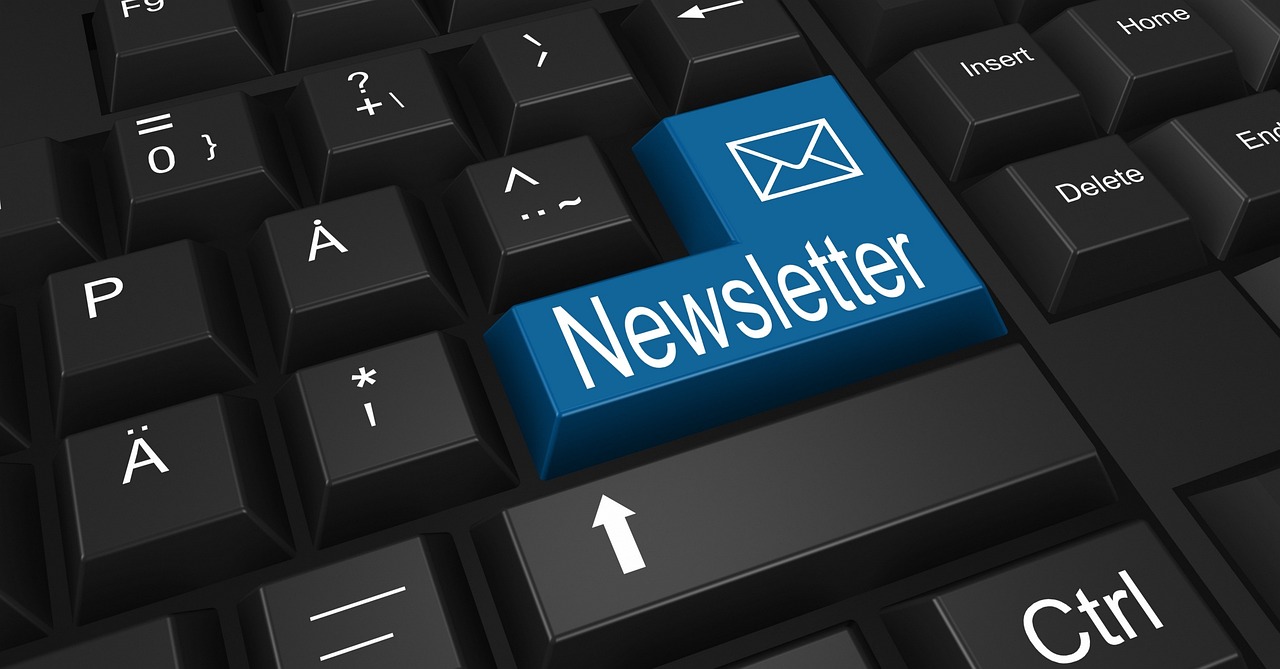Blog
Are newsletters dead? How interactive email with killer subject lines are taking over?

Are Newsletters Dead? Increase Opens with Killer Subject Lines
Are newsletters dead?
The answer to the question “is/are X dead?” is not typically a simple yes or no. This statement can only be qualified with a phrase like “no, but dying.” Newsletters aren’t dead. But they are delicate and quickly die off.
A newsletter may “die” when a particular topic has reached its end. Newsletters that uphold a goal that has already been achieved are one example.
Therefore, switching to an email newsletter is your only choice. The subject line is one of the most crucial components of an effective email newsletter. According to Jupiter Research (2007), one in three Americans open emails based only on the subject line, and almost 70% of Americans decide to click the “This is Spam” button based only on the subject line. Getting your readers’ attention is the next hurdle, as a strong subject line can significantly increase the open rates of your emails.
333.2 billion emails are sent and received each day. This amount will have risen to around 375 billion by 2025. By 2025, almost half of the world’s population will regularly use email. The return on investment (ROI) is astounding: on average, you will receive $42 for every $1 you put into email marketing.
Even while email marketing works quite well, many companies only get average results from it. The majority of businesses’ email newsletters are dull, impersonal, and don’t do much to generate leads or customers. Due to the overwhelming volume of emails that individuals get every day, only companies with a well-defined email newsletter strategy achieve significant success.
How Email Newsletters Differ from Email Drip Campaigns?
Email subscribers are guided to a goal by drip campaigns, which are a sequence of pre-written emails. They preserve brand awareness while providing subscribers with long-term value. Over the course of days, weeks, or months, these emails “drip” helpful information, goods, or recommendations.
An email newsletter, on the other hand, is a particular kind of email that is routinely sent to your whole mailing list. While some companies send out newsletters on a weekly basis (e-commerce and retail), others do it on a monthly or quarterly basis.
Event announcements, business news, and other information that your audience would find useful are regularly included in newsletters. It all comes down to being consistent and using a newsletter to cultivate a relationship with your email audience. Newsletters also contain summaries of your published content, including blog posts and videos.
Email newsletters are sent to the entire list of people who have signed in for updates, but drip emails are more focused because they are based on individual behavior, as you can see. It makes sense that a lot of brands have trouble getting their newsletters to open and be read.
The Ideal Frequency for Email Newsletter Sending

Every email newsletter should have a clear objective, and the best way to do it is to be consistent with both the content and the scheduling.
Although there are no strict guidelines regarding the frequency of emails, data indicates that 61% of B2C and D2C subscribers and customers prefer to receive promotional emails in their inbox once a week, with 38% saying they wouldn’t mind receiving them more frequently.
Nevertheless, for the majority of brands, the B2B rule of thumb is once every month. However, when sending email newsletters, bear in mind these fundamental guidelines:
Maintain your writing tone consistent with your brand style
The tone of B2C emails is often designed to grab the recipients’ attention. Additionally, this tone might be visually pleasing and amusing. B2B email marketing, on the other hand, focuses more on building relationships and providing a reliable response in a way that the recipient would value.
Time it correctly
When it comes to B2B email marketing, timing is crucial. Although the optimal dates for every audience and company vary, you may use your analytics data to determine when to send your email newsletter. Finding out where your reader is in the purchasing cycle is another part of timing. This enables you to determine what kind of follow-up emails you ought to send. A person who attends a webinar or watches a video is probably interested in that subject.
Build authority
B2B newsletters are an excellent tool for conducting market research and information sharing. Highlight the key conclusions from your most recent case study. Create a consumer survey or poll to get important information while interacting with your readers. This will help you improve the value of your content and build your brand authority.
Monitoring Your Email Newsletter’s Engagement
Tracking email interaction will provide you the ability to build and maintain relationships in this crowded, cutthroat mailbox climate. Until your leads are prepared to take the next step, the main goal of sending email newsletters is to maintain brand awareness. To do this, you need a mechanism to gauge how interested readers are in the content that is included in the actual email newsletter.
To measure which receivers open individual emails and which do not, for example, you could use platforms like Salesforce Marketing Cloud, MailChimp, HubSpot Email Marketing, Sendinblue, Klaviyo, or YMLP. This aids in identifying the subjects they are interested in and the kinds of information they are most likely to interact with (e.g., videos vs. infographics).
It’s important to monitor dozens of email engagement indicators.
Best Practices for Email Subject Lines

When it comes to coming up with catchy subject lines, there are countless schools of thought.
We’ll be discussing distinct kinds of email subject lines today that, when used properly, can significantly improve your email marketing strategy.
Less is more
Stay away from using generic, unclear, deceptive, or excessive email subject lines if you want to make sure your message doesn’t wind up in the recipient’s spam folder.
The most effective subject lines are frequently brief, educational, and direct. It should clarify the contents of the email and set expectations for the reader.
Generally speaking, subject lines that are excessively lengthy will be cut short, especially when viewed on mobile devices. Additionally, since mobile devices account for the bulk of email opens, we advise utilizing subject lines of no more than 50 characters to guarantee that consumers who are scanning your emails will read the full thing.
This also holds true for standard emails.
Spend less time using the terms “newsletter” or “update” in the subject line. According to recent research, these lines may significantly lower the message’s open rate by alerting readers that the email is part of a series, allowing them to prepare for the next one.
Over-Deliver and Under-Promise
Consider the subject line of your email as a promise to the reader. It is important that you deliver on your promise because you are informing them of what to expect from your communication.
People now get an incredible amount of emails every day. Don’t make false promises to increase your chances of getting them opened. There’s no way to gain goodwill by misleading your subscribers. This will not only greatly annoy your readers, but it will also teach them to never trust your subject lines again.
Inform Them of What’s Inside
The purpose of your email subject line is to lure your audience into taking action. Seize the chance to offer them something worthwhile. It could be a temporary discount offer or your new e-book. Tell your readers that if they take the time to read your email, they will find something of value there.
This performs considerably better than email subject lines that just say “thank you,” as it makes it obvious that there is a real advantage that they won’t want to pass up.
Create a Sense of Urgency
Consider a subject line that will encourage your readers to take action. They must be under pressure to act right now. Showing that the sale or event is time-sensitive will help you achieve this.
Consider the vintage infomercials from the 1990s that exhorted viewers to “Act Now!” Although we wouldn’t advise using that precise wording in your content, creatively wording an email subject line to convey urgency and scarcity can encourage readers to click.
Your viewers will feel as though time is running out if you use subject lines like “Act Fast and Save 15%” or “5 Hours Left to Save Big.” To prevent coming across as “the brand that cried wolf,” try to utilize these subject lines sparingly.
Customize, customize, customize
Since no two subscribers are the same, neither should the emails you send them.
There has never been so much subscriber data available to marketers. They can quickly find out about their overall likes and dislikes, jobs, and interests. Therefore, when you intend to send an email, make sure it fits perfectly to the recipient.
Fortunately, there are a number of ways to personalize your email subject line, including first names, location, transaction history, birthdays, and anniversaries.
Email Subject Lines That Work
One of the most effective marketing strategies you can use is an original and captivating email.
We’ve put up a list of the top email subject lines and the reasons behind their effectiveness to help you make the most of them and impress your readers with your upcoming email marketing campaign:
“How to choose the ideal book title” Chandler Bolt
Why It Works: This email subject line eliminates all uncertainty about what recipients would gain from opening it, in addition to offering a clear advantage right away.
“You haven’t got these yet, and they’re 30% off.” J. Crew Factory
Why It Works: This example makes readers wonder, “What am I missing?” by making them feel FOMO (fear of missing out) from J. Crew. Here, J. Crew Factory stimulates open rates by combining a strong discount incentive with a spirit of inquiry.
“TIME’S ALMOST UP: Final hours for 30-50% off EVERYTHING” – EXPRESS
Why It Works: EXPRESS employs a more forceful, yet focused, strategy to establish urgency by stating the precise amount of time left and emphasizing the message in all caps.
“Now is not the time, Ramona” Laura Belgray
Why it Works: Seeing their first name helps the email seem like it was written only for them while consumers are simply scrolling through their inbox. It seems more considerate and intimate.
“You left this behind…” – Rent the Runway
Why it Works: Even though this subject line is frequently used, it still works well. Engaging emails that target abandoned carts, such as those from Rent the Runway, can assist in reversing a prospect’s addiction to shopping.
In conclusion
The secret to a good email newsletter is not a set formula. One email marketing campaign’s success may not translate to another.
Thus, the most crucial tip is to continue experimenting. Keep tabs on the outcomes of each email before selecting the most appropriate titles for your company and the audience you are targeting.
Share
15 Minutes Free Discovery Call
How Zrafted Can Help Businesses?
- Contact Centre Solutions
- Managed IT Services
- Digital Marketing
- Business Process Outsourcing
- Virtual Assistance
- E-Commerce
